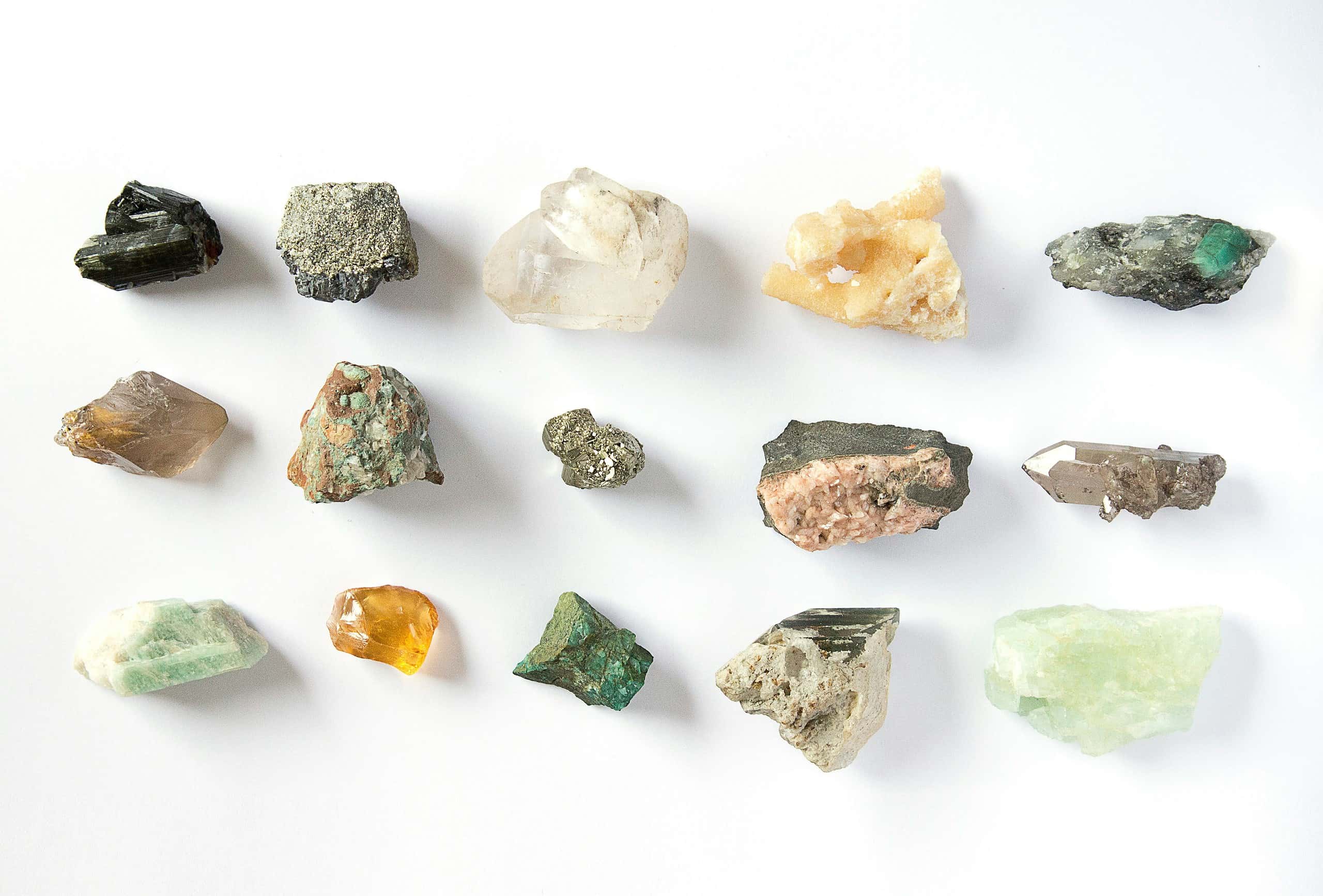
People often perceive crystals as mere objects of beauty and fascination. But there’s more to these geological wonders than meets the eye. These natural formations are crucial to geology and fundamental to understanding the intricacies of the Earth’s crust. Unfortunately for some reading this, they have no healing or magical powers. Sorry!
In geology, crystals are the building blocks of many rocks and minerals that make up our planet. They are arrangements of atoms or molecules in an orderly and repeated pattern. Essentially, a crystal is an orderly repetition of the same atoms.
Now the next question is: why do crystals arrange themselves in these strikingly ordered patterns? That’s simply because this is the path of least resistance, in which the crystals achieve their lowest energy state. This is why some crystals like pyrite are cubic, while others like quartz have a specific hexagonal shape — it’s how the molecules can align to reach the lowest energy state in which they are stable.
The Science of Crystals
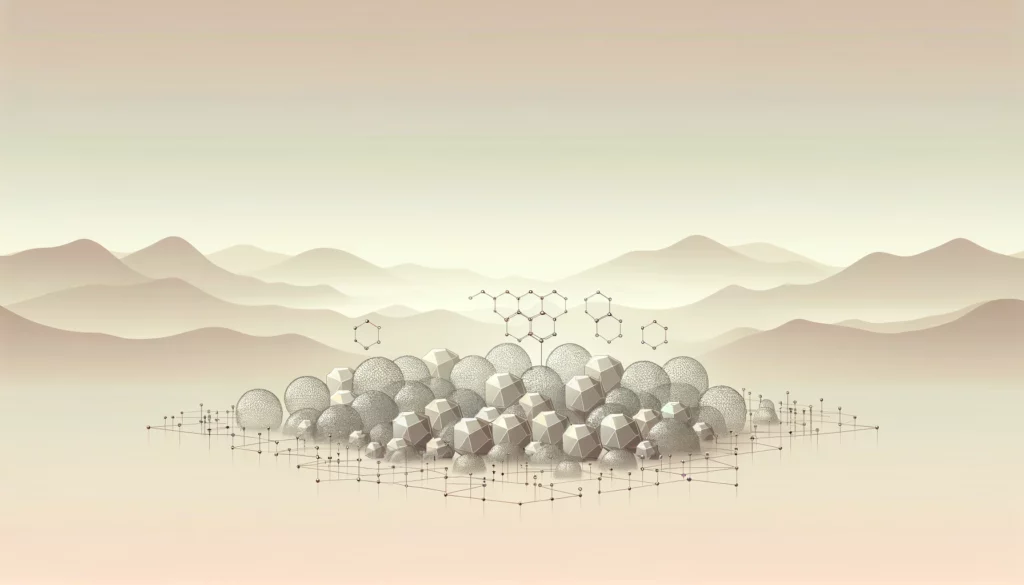
There’s nothing magical about crystals — just a lot of ordered atoms — but that doesn’t mean they’re not absolutely amazing. As strange as this sounds, crystals are formed through processes that have been occurring for millions of years and continue to shape the landscape of the Earth. It’s all temperature, pressure, and chemistry.
Crystals form through — you’ve guessed it — the process of crystallization. This process typically occurs when a liquid cools and solidifies, or a solution becomes supersaturated and begins to precipitate. The forces of attraction between the particles guide them into a lattice structure that minimizes the system’s energy state.
Defining Crystals In More Detail
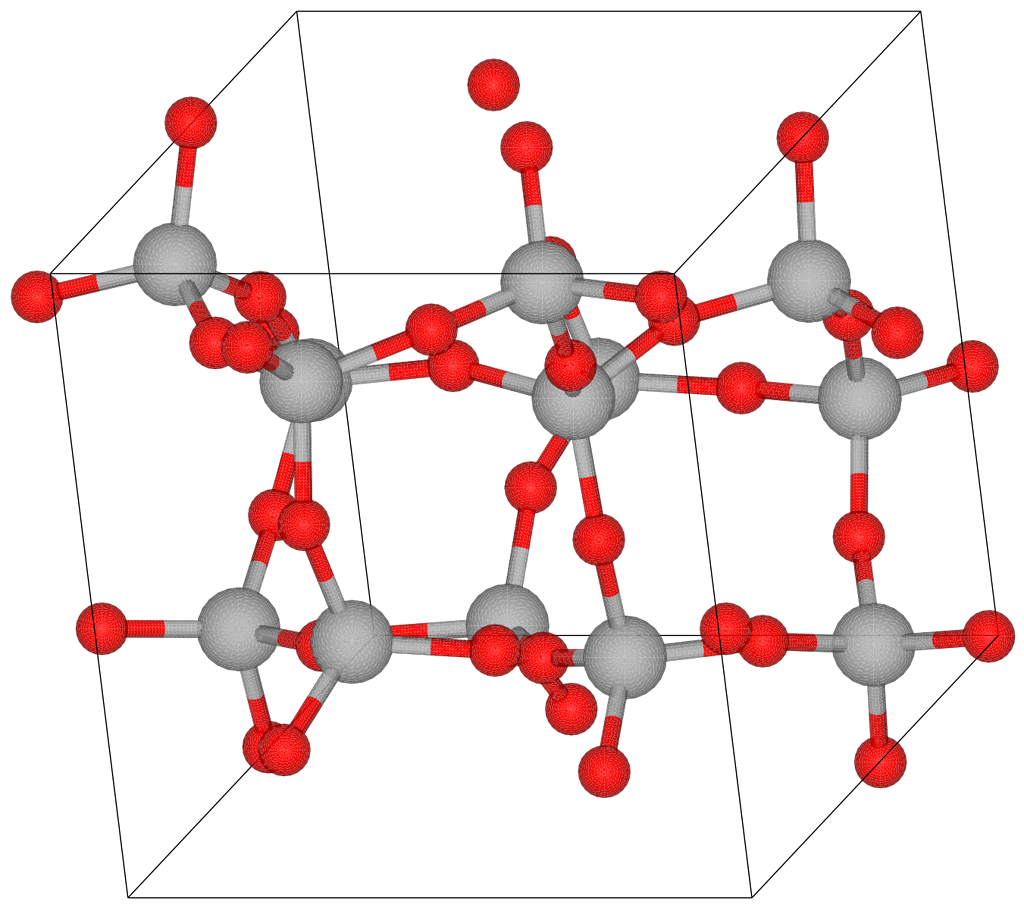
At its core, a crystal is a solid material whose constituents, such as atoms, molecules, or ions, are arranged in a highly ordered microscopic structure. This arrangement forms a lattice that extends in all directions, giving crystals their characteristic shapes.
This lattice separates crystals from amorphous solids (like obsidian, for instance), where particles are arranged randomly. The structured pattern of crystals results in unique and often symmetrical forms. This orderly arrangement is not just a defining feature; it’s the essence of a crystal’s identity.
This structure determines not only the crystal’s external appearance but also its physical properties. It is governed by the types of atoms present and the conditions under which the crystal is formed. For instance, the difference in structure between diamond and graphite, both composed of carbon atoms, results in vastly different physical properties. Diamonds, with their three-dimensional tetrahedral arrangement, are one of the hardest natural materials, while graphite, with its layered structure, is soft and slippery.
The crystal lattice can take various forms, including cubic, tetragonal, hexagonal, and more. Each of these lattice types contributes to the diversity of crystal shapes observed in nature. The angles at which atoms or molecules are bonded, and the distance between them, create the geometric patterns that are characteristic of specific crystal types.
Not all crystals are perfect
However, some crystals are imperfect due to the presence of defects in their orderly atomic structure. These imperfections can occur at various scales and can be classified into different types, such as point defects (vacancies, interstitials, and substitutional atoms), line defects (dislocations), and planar defects (grain boundaries, twin boundaries, and stacking faults).
Defects in crystals can arise during the crystal growth process due to conditions like rapid cooling, the presence of impurities, or external stresses. Although these imperfections deviate from the ideal crystal structure, they are of significant scientific and technological interest because they can profoundly affect the material’s physical and chemical properties, including electrical conductivity, mechanical strength, and optical characteristics.
In some cases, the presence of defects is deliberately introduced to tailor materials for specific applications, such as semiconductors in electronics.
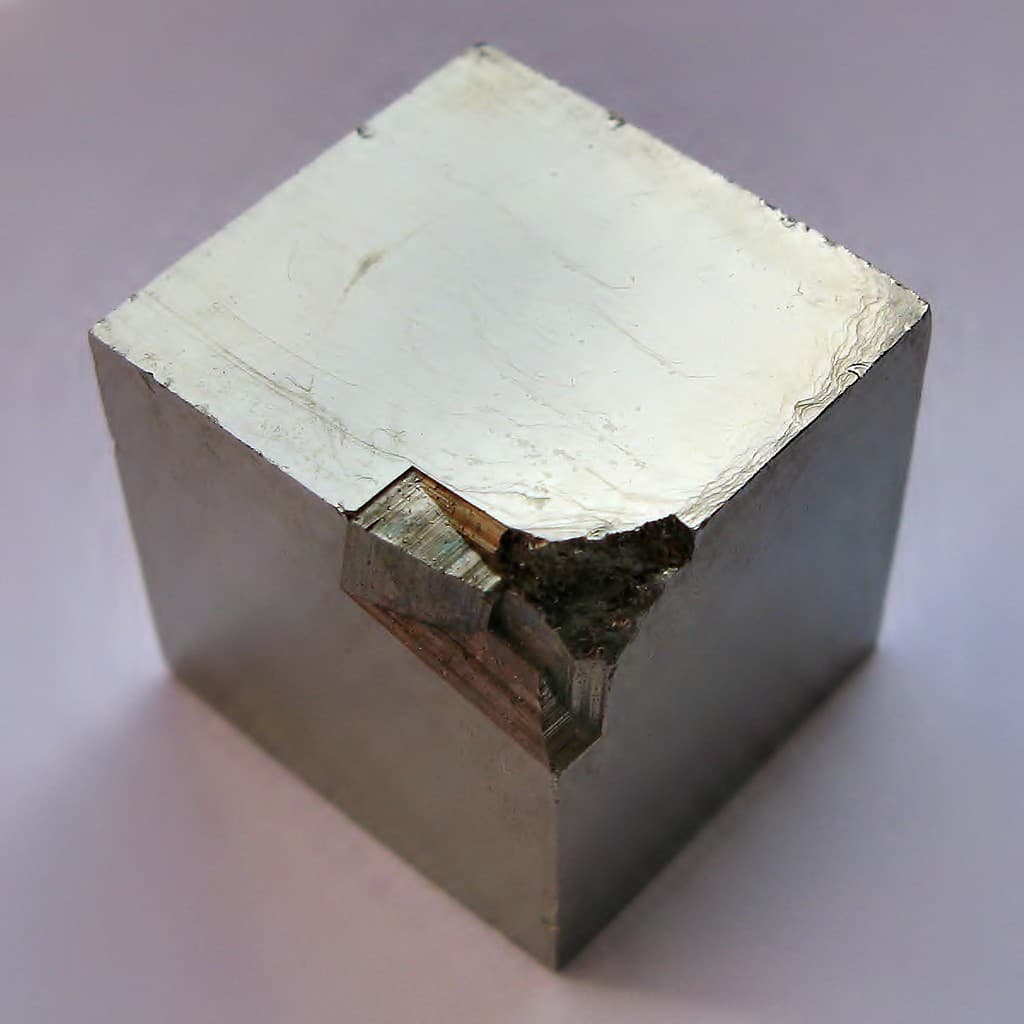
How crystals form
The formation of crystals in nature is governed by the principles of mineralogy and geochemistry. It typically occurs in two main environments: cooling molten rock (magma and lava) and supersaturated solutions.
When molten rock cools, the decrease in temperature allows minerals to crystallize. The slower the cooling process, the larger the crystals can grow. This is evident in intrusive igneous rocks, like granite, where the slow cooling deep within the Earth’s crust allows for the growth of visible crystals.
In contrast, when water evaporates from a supersaturated solution or the solution cools, it can no longer hold the same amount of dissolved minerals, leading to crystal formation. This process is commonly observed in sedimentary environments, where minerals like halite and gypsum crystallize. The formation of geodes, with their internal crystal-lined cavities, is a classic example of this process.
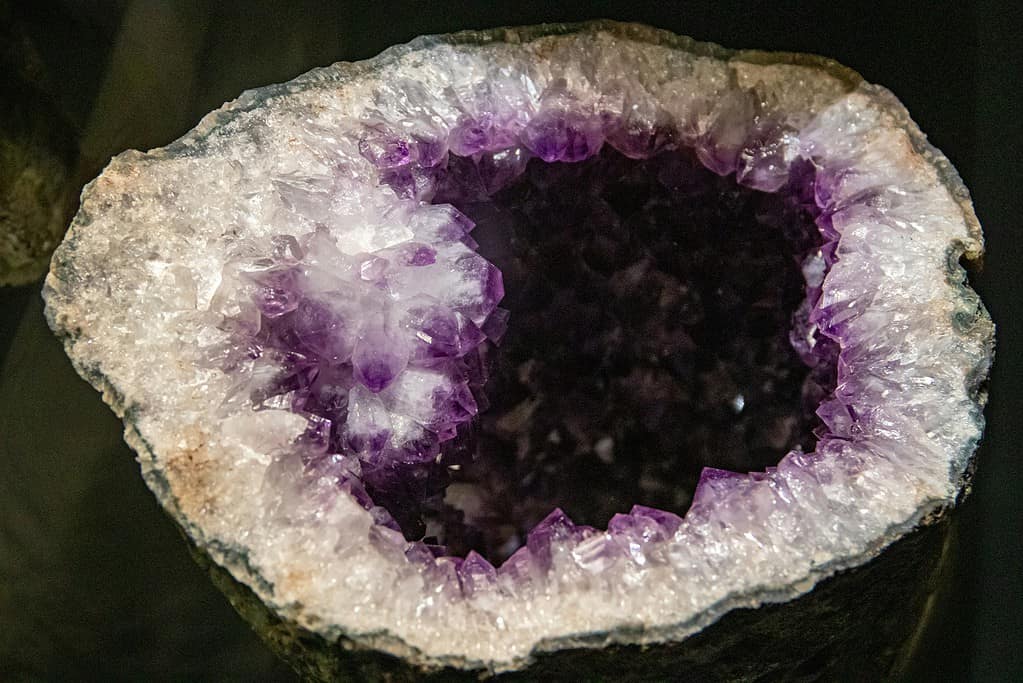
Conditions for Crystal Formation
Several factors influence the formation and growth of crystals. Temperature and pressure play crucial roles; different minerals will crystallize at different temperatures and pressures. The presence of certain elements and compounds in the magma or solution also dictates which types of crystals will form. Furthermore, the rate of cooling significantly affects the size and quality of the crystals. Rapid cooling typically results in small, fine-grained crystals, while slow cooling leads to larger, more defined crystals.
Crystal growth is also dependent on space. In confined spaces, crystals may form imperfect, irregular shapes as they compete for room to develop. In contrast, open cavities, such as those found in geodes, allow for the growth of well-formed, often spectacular crystal structures.
Examples of crystals in geology
The geological world is abundant with a variety of crystals, each with its unique characteristics and composition. Some of the most common and significant types of crystals found in the Earth’s crust include:
- Quartz: Perhaps the most well-known crystal, quartz is renowned for its hardness and resistance to weathering. It is composed of silicon dioxide and forms in a wide range of environments. Quartz crystals can be clear, but impurities often give them various colors, leading to different types like amethyst, citrine, and rose quartz.
- Feldspar: Feldspar is the most abundant group of minerals in the Earth’s crust. These crystals are significant in the formation of igneous, metamorphic, and sedimentary rocks. They typically form in shades of white, pink, or gray and are known for their cleavage, breaking along flat planes.
- Calcite: A primary component of limestone and marble, calcite is a carbonate mineral that forms in both sedimentary and metamorphic environments. It is notable for its wide variety of forms, including transparent, translucent, and opaque crystals, and is often found in spectacular cave formations like stalactites and stalagmites.
- Pyrite: Known as “fool’s gold” for its metallic luster and pale brass-yellow hue, pyrite is an iron sulfide mineral. It often forms in cubic or pyritohedral shapes and is found in a variety of geological formations.
- Gypsum: This soft mineral is composed of calcium sulfate dihydrate. Gypsum crystals can take on spectacular forms, from the translucent, blade-like selenite to the fibrous, satin spar variety. It’s a common evaporite mineral, forming when saline waters evaporate.
However, these are just a handful — there’s no end to the variety of different minerals and crystals you can find in geology. In fact, the variety of crystals is so great that they’re usually classified into distinct types.
Types of Crystals by Chemistry
Silicate Crystals
Silicate crystals are the most abundant type on Earth. They form the majority of crystals in the Earth’s crust. Here are a few examples of this type of crystal, with corresponding minerals.
- Quartz and Feldspar — but we’ve already mentioned those.
- Mica: Micas, including biotite and muscovite, are sheet silicates known for their perfect cleavage, which allows them to split into thin, flexible sheets. They are common in igneous and metamorphic rocks.
- Amphiboles: These are another group of silicate minerals, typically dark-colored and found in igneous and metamorphic rocks. They are known for their elongated, needle-like crystals and are significant in identifying metamorphic facies.
- Olivine: Commonly found in igneous rocks, olivine is notable for its olive-green color. It’s a primary mineral in the Earth’s upper mantle and crucial in studying deep-Earth processes.
Carbonate Crystals

Carbonate minerals are primarily composed of carbonate ions along with calcium, magnesium, or iron.
- Calcite: A principal component of limestone, calcite is known for its rhombohedral cleavage and reaction with dilute hydrochloric acid. It forms through both biological and non-biological processes and is a key mineral in sedimentary rocks.
- Aragonite: Chemically identical to calcite but with a different crystal structure, aragonite is found in marine shellfish and coral. It’s less stable at the Earth’s surface than calcite and can transform into it over geological timescales.
- Dolomite: Similar to calcite but often with a significant magnesium content, dolomite is a key mineral in dolostone and often forms in a sedimentary environment through the diagenesis of calcite.
Sulfate Crystals
Sulfate minerals contain sulfate ions, typically paired with calcium, barium, or lead.
- Gypsum: This soft mineral is widely known for its use in plaster and drywall. In nature, it forms from the evaporation of seawater and is often found in sedimentary environments.
- Barite: Distinguished by its high density, barite is often used in drilling fluids in the oil industry. It forms through precipitation from hydrothermal solutions and is found in both sedimentary and metamorphic rocks.
- Anhydrite: Closely related to gypsum but without water in its structure, anhydrite transforms into gypsum in the presence of water. It’s an important mineral in evaporite deposits.
Halide Crystals
Halide minerals are composed of halogen ions combined with elements like sodium, calcium, or potassium.
- Halite: Commonly known as rock salt, halite forms through the evaporation of saline waters. Its cubic crystals and salty taste make it easily recognizable.
- Fluorite: Characterized by a wide range of colors and its use as a flux in steel-making, fluorite typically forms cubic crystals and is found in hydrothermal veins.
Types of Crystals by Lattice
Crystals can also be categorized based on their lattice structure, which is the arrangement of points in space at which atoms, ions, or molecules are positioned. Here are the primary types of crystalline geometries.
1. Cubic (Isometric) System
- Characteristics: Features three axes of equal length that intersect at right angles. This system includes simple cubic, face-centered cubic (FCC), and body-centered cubic (BCC) structures.
- Examples: Pyrite (FCC) and halite (simple cubic).
2. Tetragonal System
- Characteristics: Consists of three axes at right angles, where two are of equal length and the third is either longer or shorter.
- Examples: Rutile and zircon.
3. Orthorhombic System
- Characteristics: Has three mutually perpendicular axes, each of different lengths.
- Examples: Topaz and olivine.
4. Hexagonal System
- Characteristics: Contains four axes: three equal-length axes intersect at 60-degree angles in a single plane, and a fourth axis is perpendicular to the plane and of a different length.
- Examples: Quartz and beryl.
5. Rhombohedral (Trigonal) System
- Characteristics: Similar to the hexagonal system but with a rhombohedral lattice distortion, meaning axes of equal length but not at right angles.
- Examples: Calcite and corundum.
6. Monoclinic System
- Characteristics: Features three axes of unequal length. Two axes intersect at an angle other than 90 degrees, while the third is perpendicular to the plane formed by the first two.
- Examples: Gypsum and jadeite.
7. Triclinic System
- Characteristics: The most general system with three axes of unequal length, none of which intersect at 90 degrees.
- Examples: Turquoise and kyanite.
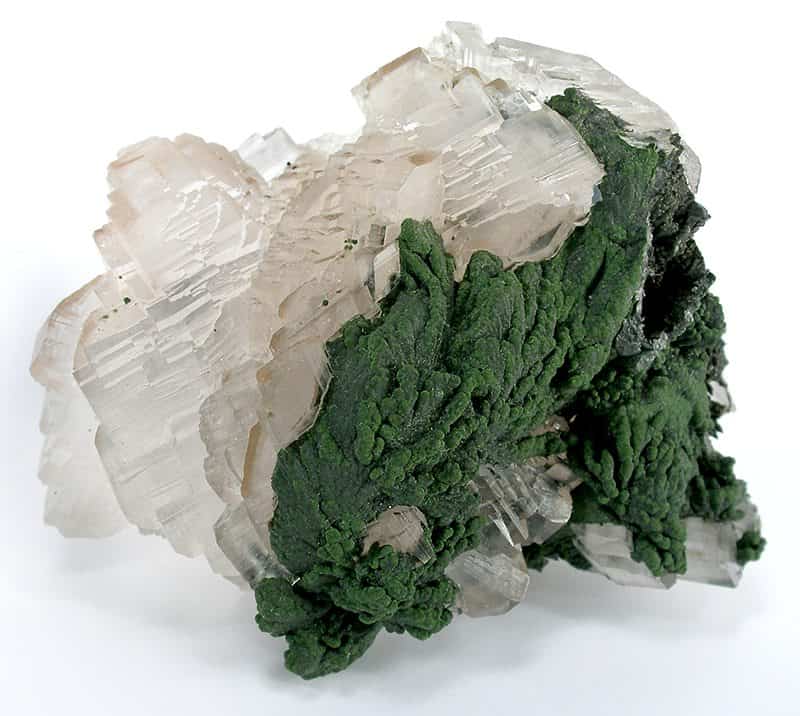
Properties of Crystals
Crystals are characterized by a range of physical properties that are crucial for their identification and classification. These include the following.
Physical Properties
- Hardness: Measured on the Mohs scale, hardness is a key property used to identify minerals. For example, diamonds, composed of carbon atoms in a rigid lattice structure, rank as the hardest known natural substance.
- Cleavage and Fracture: Cleavage describes how a mineral breaks along specific planes of weakness. For instance, mica shows perfect cleavage in one direction. Fracture, on the other hand, is the tendency of a crystal to break in a non-planar pattern, like the conchoidal (shell-like) fracture seen in quartz.
- Density and Specific Gravity: These properties reflect the composition and packing of the atoms in a crystal. For instance, dense minerals like galena (lead sulfide) have a high specific gravity due to the presence of heavy lead atoms.
Optical and Chemical Properties
Optical properties, particularly the interaction of crystals with light, are as varied as their physical characteristics:
- Color and Luster: While some crystals owe their color to their inherent composition, others derive it from impurities. For example, pure quartz is clear, but iron impurities give rose quartz its pink hue. Luster describes how light reflects from a mineral’s surface, ranging from metallic in pyrite to vitreous in quartz.
- Transparency and Refractive Index: Crystals can be transparent, translucent, or opaque. Their refractive index, a measure of how much they bend light, is a fundamental optical property used in mineral identification.
Chemical properties, including reaction to acids and solubility in water, also play a crucial role in identifying and understanding crystals. For example, calcite reacts vigorously with dilute hydrochloric acid, a property used by geologists to identify carbonate rocks.
So there you have it — a small introduction to the fascinating world of crystals. No real need for magical healing powers. Crystals are awesome enough as it is.






